The "Fed put?" Exactly, what is it, and where does this mythical support reside?
It isn’t surprising with the rough start to 2022, investors are hoping the Fed will look to stabilize financial markets. Of course, after more than a decade of monetary interventions, investors developed a “Pavlovian” response.
"Classical conditioning (also known as Pavlovian or respondent conditioning) refers to a learning procedure in which a potent stimulus (e.g. food) is paired with a previously neutral stimulus (e.g. a bell). What Pavlov discovered is that when the neutral stimulus was introduced, the dogs would begin to salivate in anticipation of the potent stimulus, even though it was not currently present. This learning process results from the psychological “pairing” of the stimuli.
"Importantly, for conditioning to work, the “neutral stimulus,” when introduced, must be followed by the “potent stimulus,” for the “pairing” to be completed. For investors, as each round of “Quantitative Easing” was introduced, the “neutral stimulus,” the stock market rose, the “potent stimulus."
As shown, each time a more substantial market correction occurred, Central Banks acted to provide the "neutral stimulus."
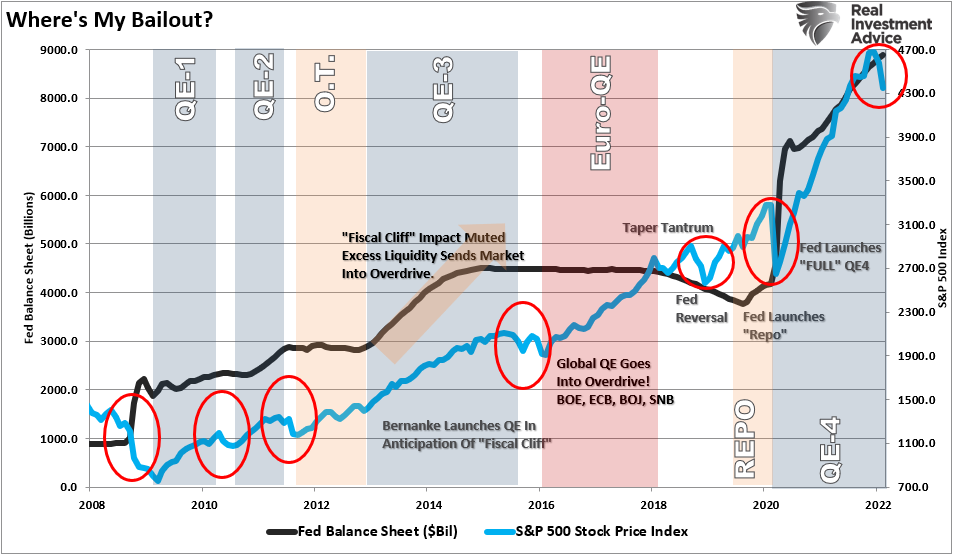
The relationship is more evident when looking at the market response to the expansion or contraction of the Fed’s balance sheet.
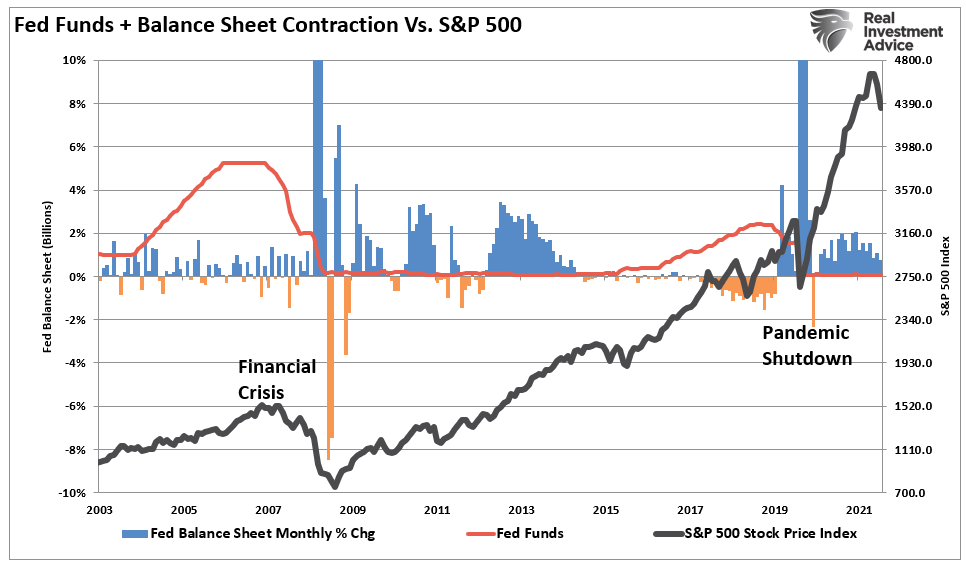
Not surprisingly, with investors now more bearish than 2016, just before global central banks went "full QE," it isn’t surprising investors are hoping the Fed "rings the bell."
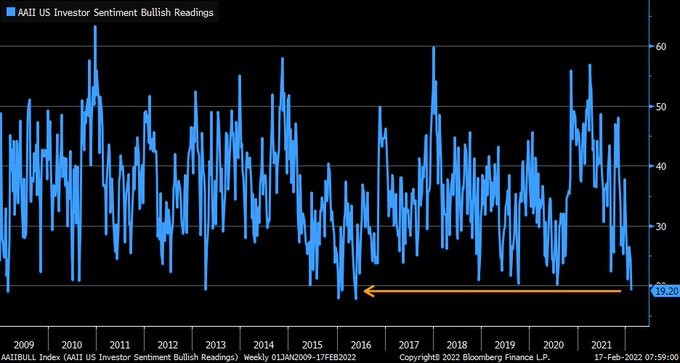
In other words, "where exactly the Fed put is."
The Fed Put
The "Fed put" is the level where the Federal Reserve will take action to begin supporting asset markets by reversing rate hikes and restarting quantitative easing (QE) programs. Recently, a BofA fund managers' survey pegged 3750 as the level they thought the "Fed put" resides.
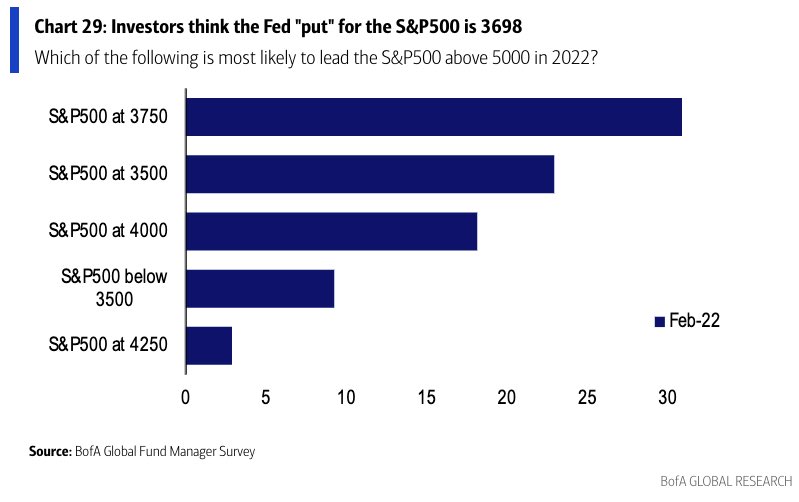
While the BofA fund managers may be correct, my targets are slightly different as they are a function of Fibonacci retracement levels from the March 2020 closing lows. From the peak close of the market, the targets are:
- 38.2% rally retracement = 3829 = 20% market decline (Fed likely worried)
- 50% rally retracement = 3523 = 27% market decline (Margin calls triggered. Fed likely acts.)
- 61.8% rally retracement = 3217 = 33% market decline (Fed put triggered)
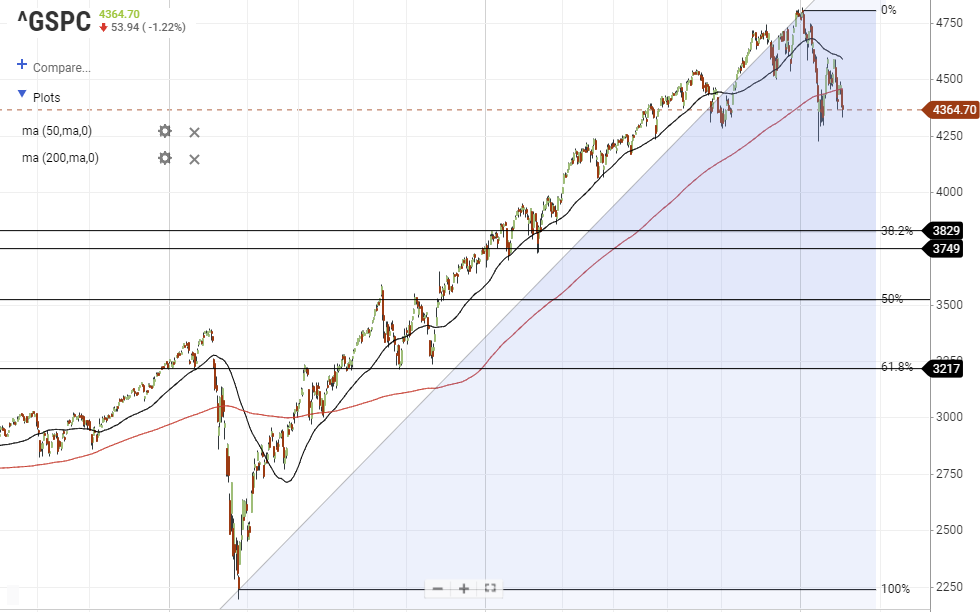
Interestingly, a 33% market decline, while likely causing the Fed to reverse monetary tightening rapidly, only erases the market gains from early 2020.
However, the risk for the Fed is that something triggers an unwinding of leverage. An absolute "reversion to the mean" event would reverse markets to the previous market peaks of 2000 and 2007. For obvious reasons, the Fed will avoid that at all costs. (This shows just how extensive the Fed-fueled bull run has become.)
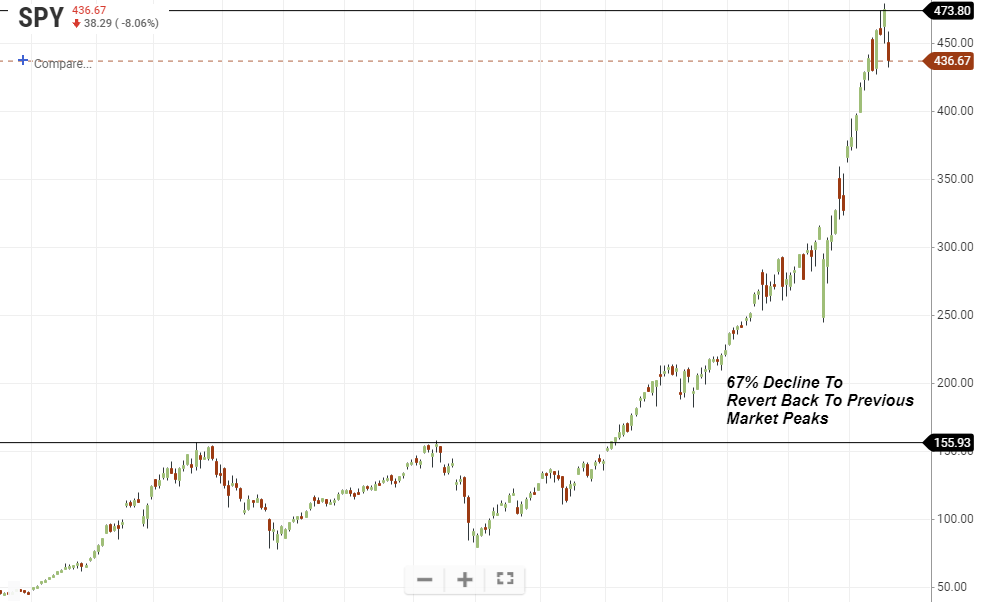
But will the Fed sacrifice the markets for inflation?
Will Powell Sacrifice The Fed Put?
Liquidity is the lifeline of markets, and the Fed, directly and indirectly, manages its flow via QE and zero rates. With inflation raging, the pandemic subsiding, and economic activity normalizing, the Fed is keen to start reducing liquidity via higher interest rates and reductions in its balance sheet. The purpose of normalizing monetary policy is to bring inflation down.
"The Fed is making it clear they want to reduce inflation. They are also telling us they will ensure financial stability. Sounds like a good plan, but walking the narrow tightrope successfully by achieving lower inflation without destabilizing markets is an incredibly tough task.
"We think the odds of success are poor. As such, we must carefully consider which goal they will prioritize when push comes to shove.”
Michael Lebowitz
Michael is correct. The most significant risk to the Federal Reserve is "financial stability." Such is particularly the case with the entirety of the financial ecosystem now more levered than ever. (Margin calls get cleared by either adding cash to the account or liquidating shares. Previous ratio peaks aligned with liquidations)
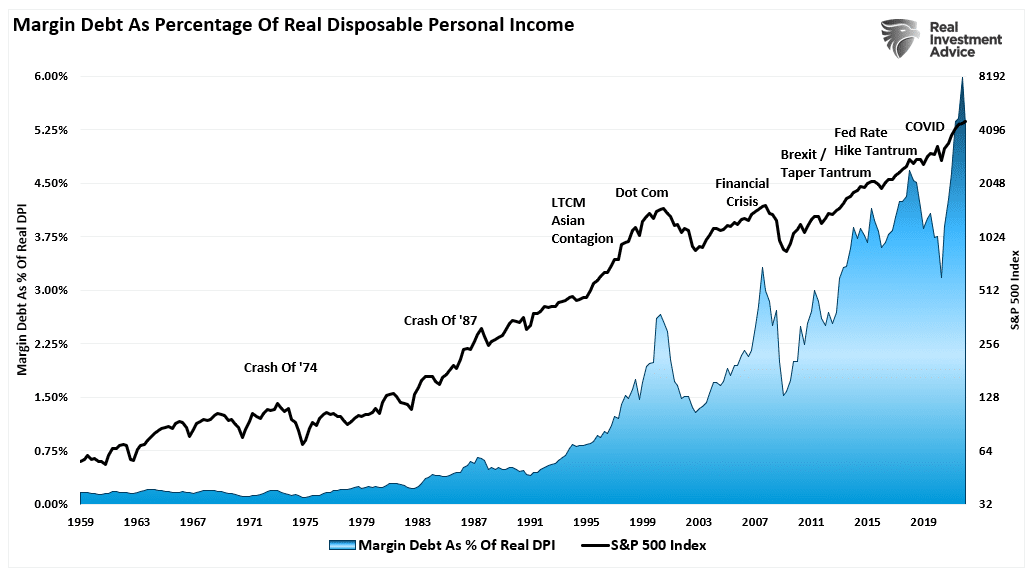
The "stability/instability paradox" assumes all players are rational, which implies avoidance of destruction. In other words, all players will act rationally, and no one will push "the big red button."
The "instability of stability" is now the most significant risk to Fed while they try to raise interest rates to lower inflation. However, as shown above, history suggests that instability will likely weigh on the Fed’s willpower to adhere to their "inflation mandate."
While the recent 10% drawdown is in line with other periods leading to the first-rate hike of a tightening cycle, we suspect the Fed has a little tolerance for a more profound decline.

Inflation Or Financial Stability
“So asset prices are somewhat elevated, and they reflect a high-risk appetite and that sort of thing. I don’t really think asset prices themselves represent a significant threat to financial stability, and that’s because households are in good shape financially than they have been. Businesses are in good shape financially. Defaults on business loans are low and that kind of thing. The banks are highly capitalized with high liquidity and quite resilient and strong.”
Jerome Powell
While financial underpinnings seem stable currently, they historically tend to become "unstable" quickly. Such is the case when the Fed hikes rates to the point it creates an issue concerning leverage.
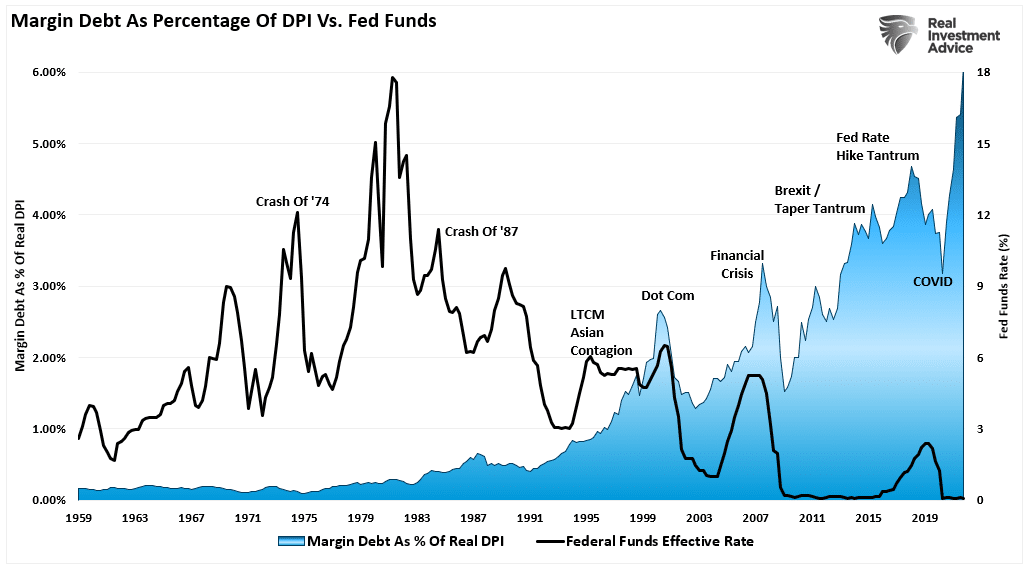
While the Fed is likely to hike rates and reduce monetary accommodation in their quest to battle inflation, that fight will end quickly when "instability" arises.
As Former Dallas Fed President Richard Fisher noted:
"Let’s face it, Joe, I want to come back to the alcohol metaphor we started with, the market has worn beer goggles for the longest possible time. They just [sic] the Fed’s going to bail them out.
"I think the strike price on the Fed put has moved significantly [lower]. Unless we have a dramatic turn in the markets, it can infect the real economy."
How would such a dramatic turn occur?
- At 20%, margin calls will begin to rise putting pressure on asset and high-yield credit markets.
- When the market declines 25%, yield curves will be fully inverted as economic growth crashes.
- At 30%, corporations will be laying off workers and moving to protect profitability.
I suspect, as noted above, that somewhere between a 20-30% decline, we will see the Fed return their focus to "market stability."
